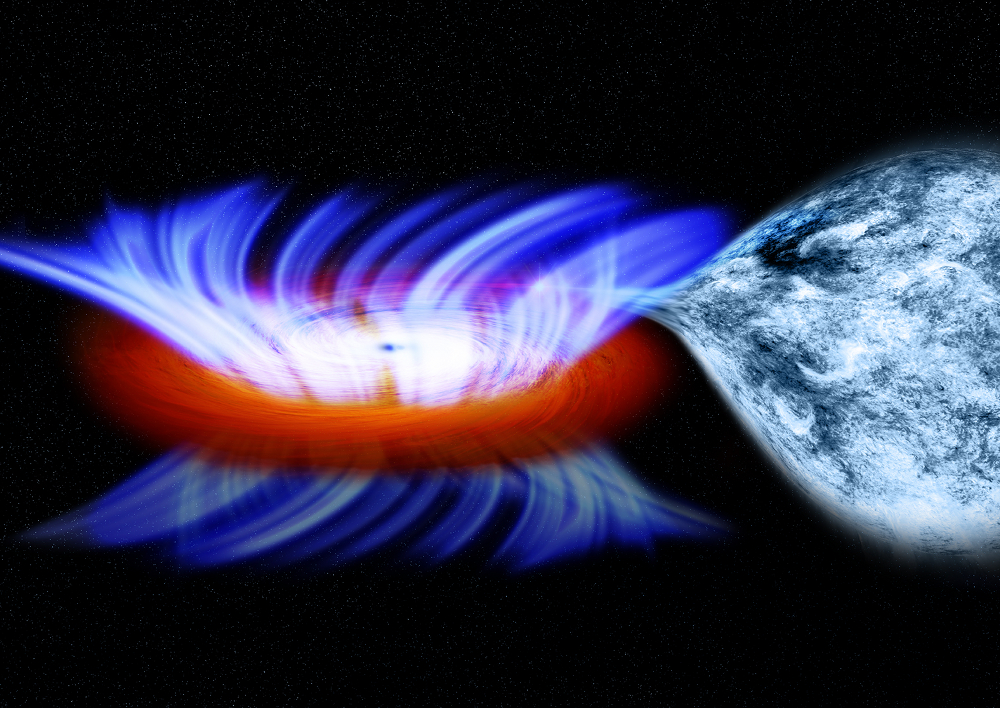
 Credit: NASA/CXC/M.Weiss
Credit: NASA/CXC/M.Weiss
March Wind
How to escape from a black hole? An interesting problem, but one that nature has been able to solve, at least in some fortuitous circumstances. The image above shows an artist's impression of a black hole in orbit around a normal star. This normal star (on the right in the image above) is distorted by the strong gravity of the black hole and stellar material spills from the star towards the black hole, spiraling closer and closer towards the event horizon, perhaps to fall through out of existence. But as this star stuff spirals down, it generates a tremendous amount of heat, enough to generate lots of high energy X-radiation. This radiation can come to the rescue of the infalling material, which can ride the light away from the black hole towards the relative safety of the interstellar darkness. Recent observations by the Chandra X-ray Observatory of a putative black hole binary system called IGR J17091-3624 shows how extreme this process can become. Observations with the Rossi X-ray Timing Explorer showed that the black hole in IGR J17091-3624 has weird, periodic bursts of X-rays (called "heartbeats") and other complicated variations, and may be the smallest black hole yet identified. The Chandra observations revealed the distinct presence of a fast moving wind zooming away from the black hole at speeds of up to 20 million miles per hour, i.e. about 3 percent of the speed of light. This wind is highly variable, and seems to turn off and on. The Chandra data suggest that sometimes this wind may carry away more material than the black hole is actually accreting. Maybe one reason this little black hole has trouble growing?
Published: March 12, 2012
<
HEA Dictionary ● Archive
● Search HEAPOW
● Other Languages
● HEAPOW on Facebook
● Download all Images
● Education ● HEAD
>

Each week the HEASARC
brings you new, exciting and beautiful images from X-ray and Gamma ray
astronomy. Check back each week and be sure to check out the HEAPOW archive!
Page Author: Dr. Michael F. Corcoran
Last modified Monday, 26-Feb-2024 17:20:37 EST


